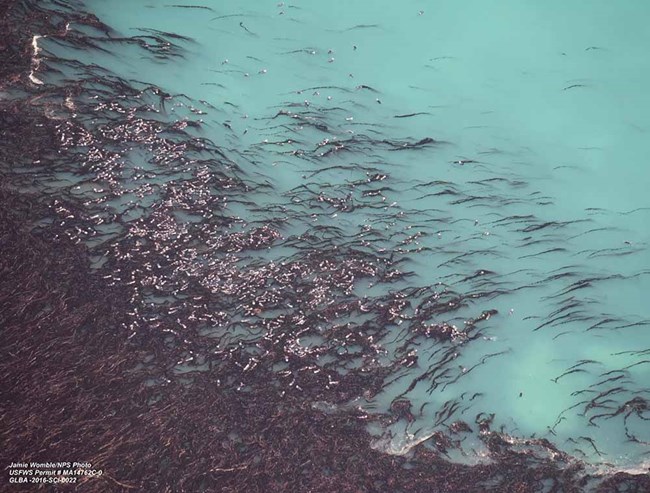Last updated: October 26, 2021
Article
Predator Recolonization

NPS/Jamie Womble
USFWS Permit #MA14762C-0
Sea otters are apex predators of the marine nearshore environment. They alter community dynamics by eating sea urchins, grazers that can decimate kelp beds if not kept in check. But sea otters were overharvested in the 18th and 19th centuries and were extirpated from southeast Alaska. In recent years, they have started to return and we've been tracking their resurgence.
At the same time sea otters decreased, tidewater glaciers in Glacier Bay were also retreating. Since 1750, the glaciers have retreated more than 60 miles (over 100 km), representing the most rapid and extensive retreat in modern times--15 times faster than any other recorded tidewater glacier.
The spread of sea otters into Glacier Bay provides a unique opportunity to examine the potential of an apex predator to colonize vacant habitat in an area (a) where ecological succession following deglaciation occurred in the absence of apex predation, (b) where the apex predator is legally protected from harvest, and (c) that has relatively few direct impacts from humans. Using novel statistical tools for estimating spatio‐temporal colonization dynamics, we chronicled the change in distribution and abundance of sea otters in Glacier Bay. We were focused on the twenty‐year period starting when sea otters first began consistently using Glacier Bay in 1993, through 2012, a time that we estimated most of the bay had been colonized by sea otters. Finally, we discuss potential mechanisms for the extraordinary success of sea otters in Glacier Bay.
The Rise of an Apex Predator Following Deglaciation
Abstract
Aim: Sea otters (Enhydra lutris) are an apex predator of the nearshore marine community and nearly went extinct at the turn of the 20th century. Reintroductions and legal protection allowed sea otters to recolonize much of their former range. Our objective was to chronicle the colonization of this apex predator in Glacier Bay, Alaska, to help understand the mechanisms that governed their successful colonization.
Location: Glacier Bay is a tidewater glacier fjord in southeastern Alaska that was entirely covered by glaciers in the mid‐18th century. Since then, it has endured the fastest tidewater glacier retreat in recorded history.
Methods: We collected and analysed several data sets, spanning 20 years, to document the spatio‐temporal dynamics of an apex predator expanding into an area where they were formerly absent. We used novel quantitative tools to model the occupancy, abundance and colonization dynamics of sea otters, while accounting for uncertainty in the data collection process, the ecological process, and model parameters.
Results: Twenty years after sea otters were first observed colonizing Glacier Bay, they became one of the most abundant and widely distributed marine mammal. The population grew exponentially at a rate of 20% per year. They colonized Glacier Bay at a maximum rate of 6 km per year, with faster colonization rates occurring early in the colonization process. During colonization, sea otters selected shallow areas, close to shore, with a steep bottom slope, and a relatively simple shoreline complexity index.
Main conclusions: The growth and expansion of sea otters in Glacier Bay demonstrate how legal protection and translocation of apex predators can facilitate their successful establishment into a community in which they were formerly absent. The success of sea otters was, in part, a consequence of habitat that was left largely unperturbed by humans for the past 250 years. Further, sea otters and other marine predators, whose distribution is limited by ice, have the potential to expand in distribution and abundance, reshaping future marine communities in the wake of deglaciation and global loss of sea ice.
Williams, P. J., M. B. Hooten, G. G. Esslinger, J. N. Womble, J. L.
